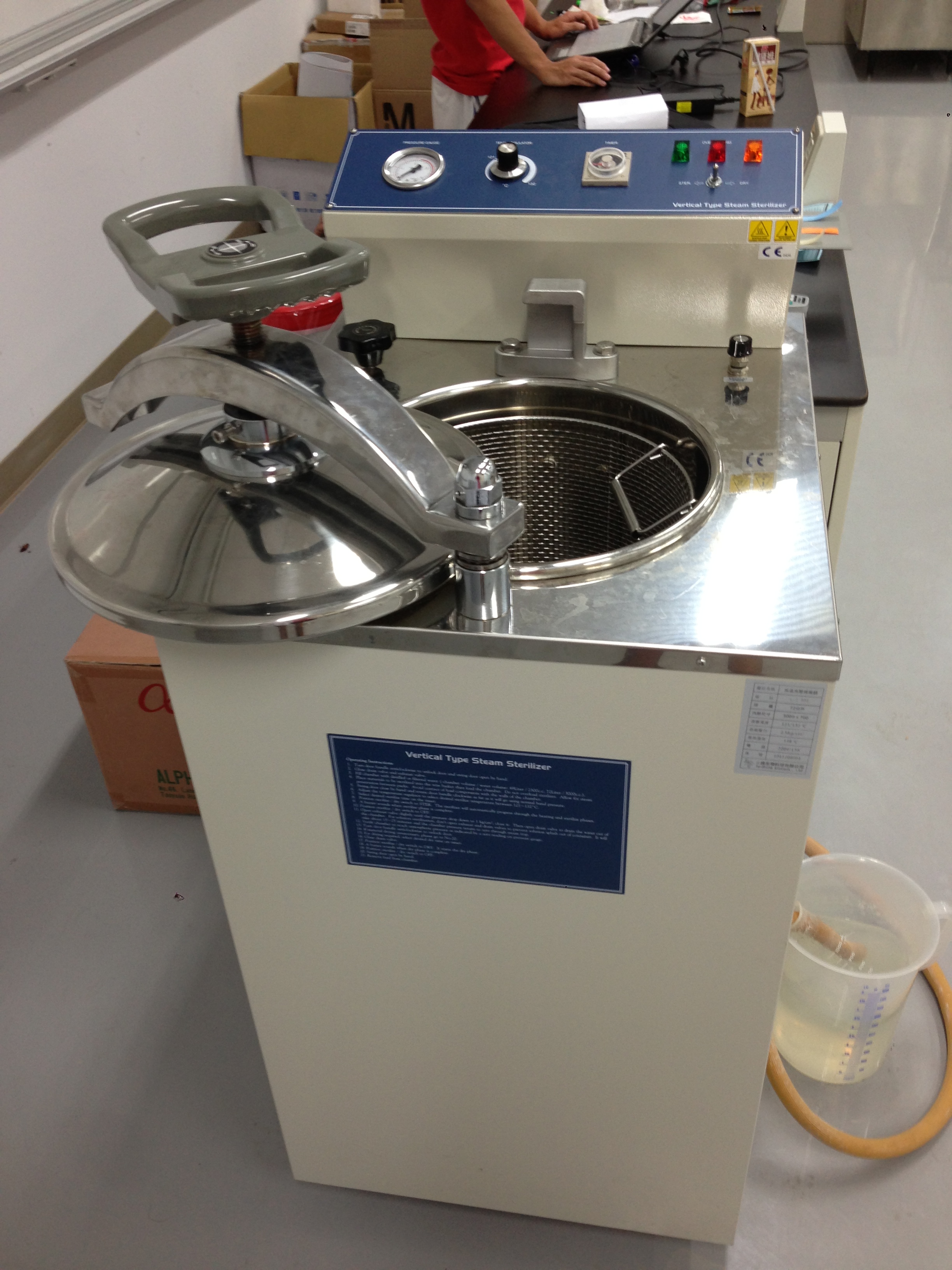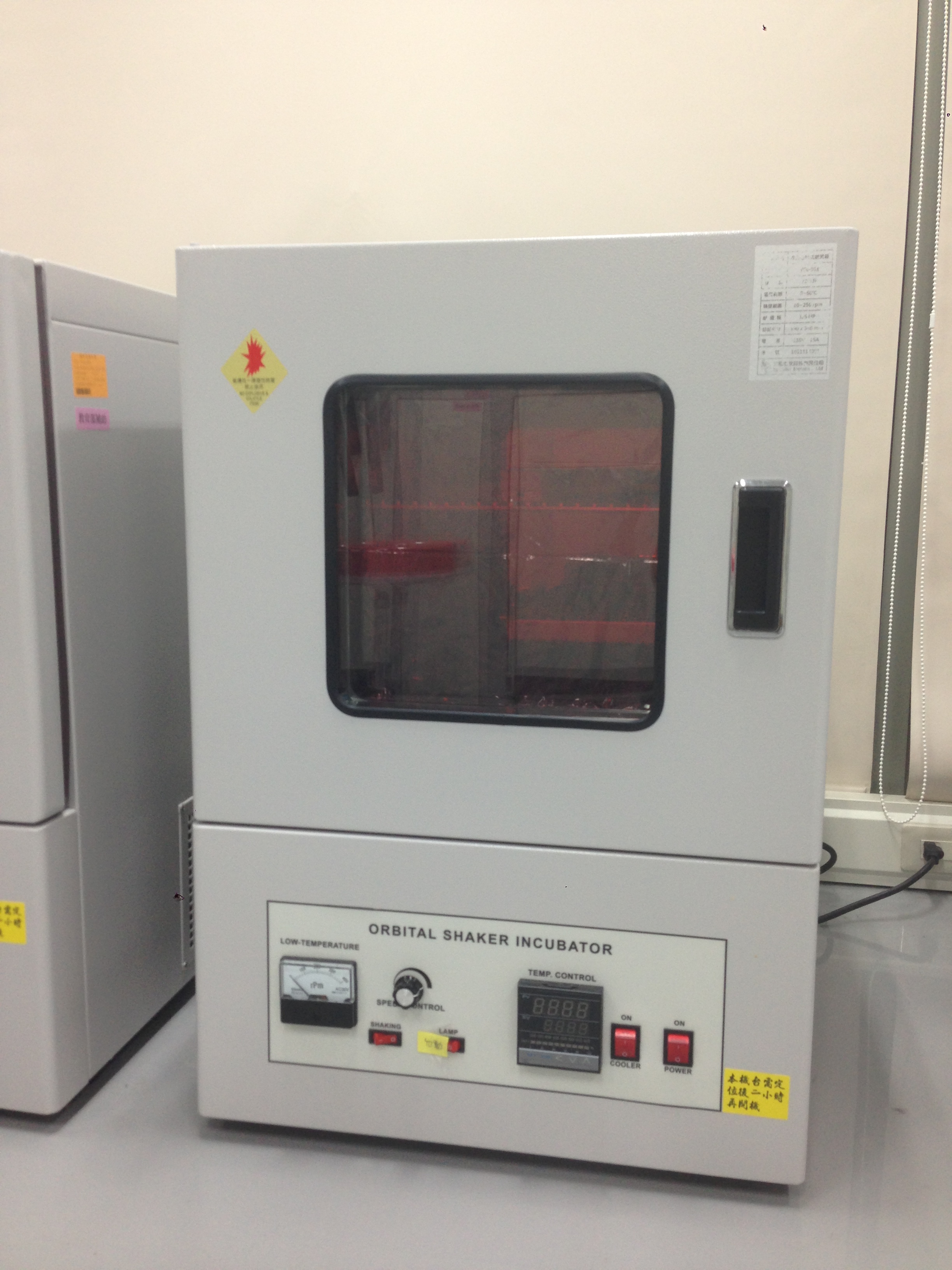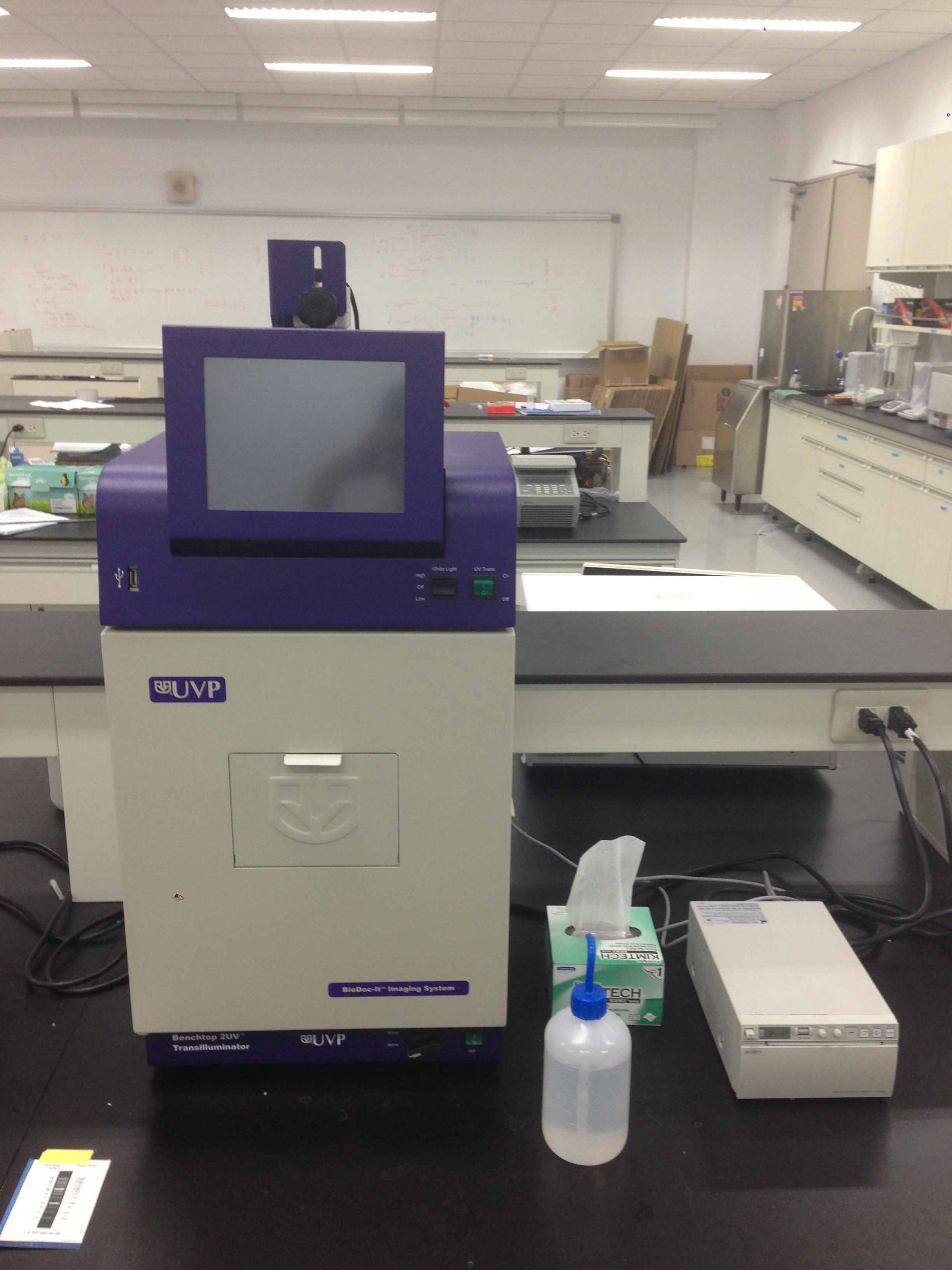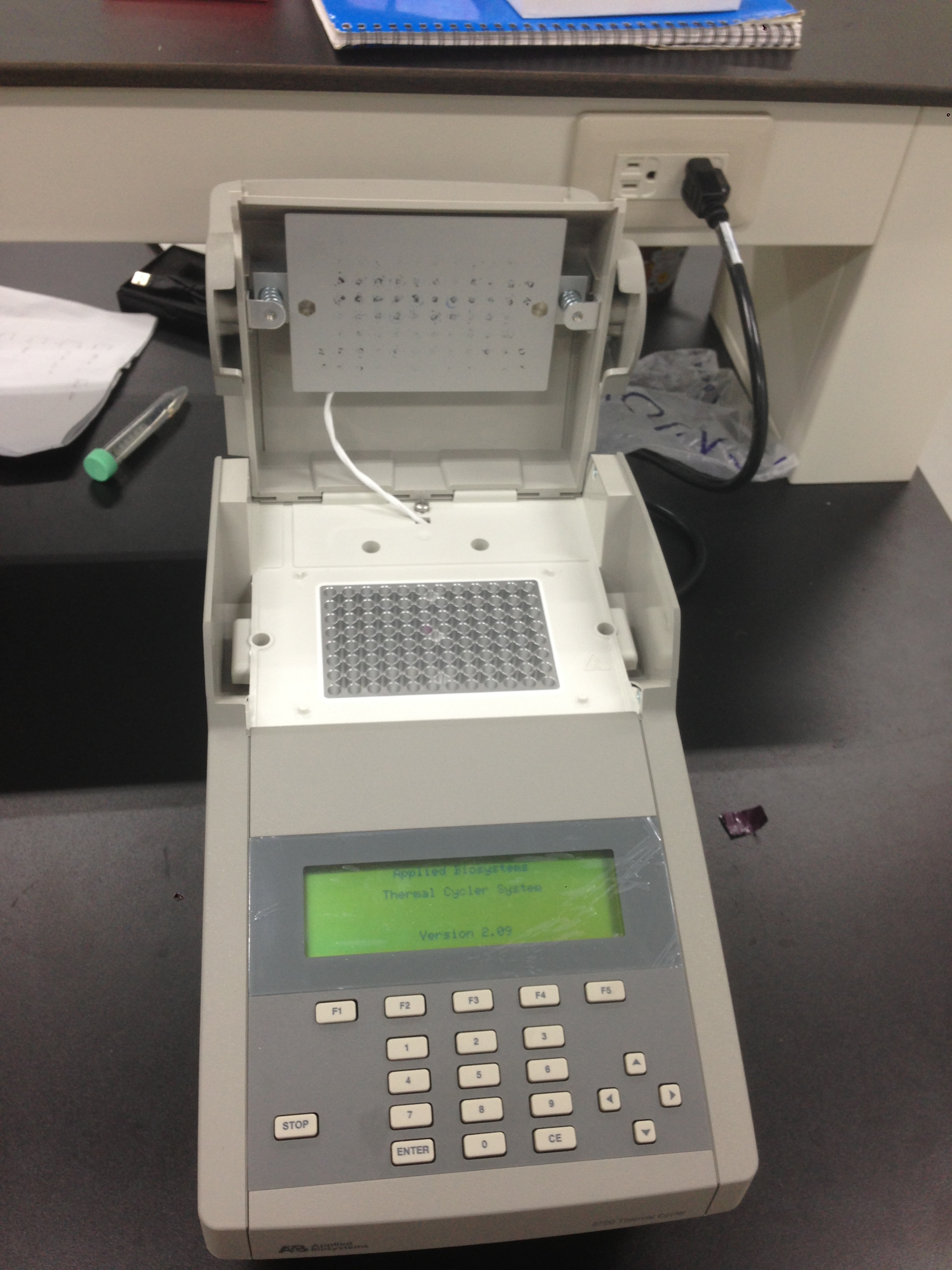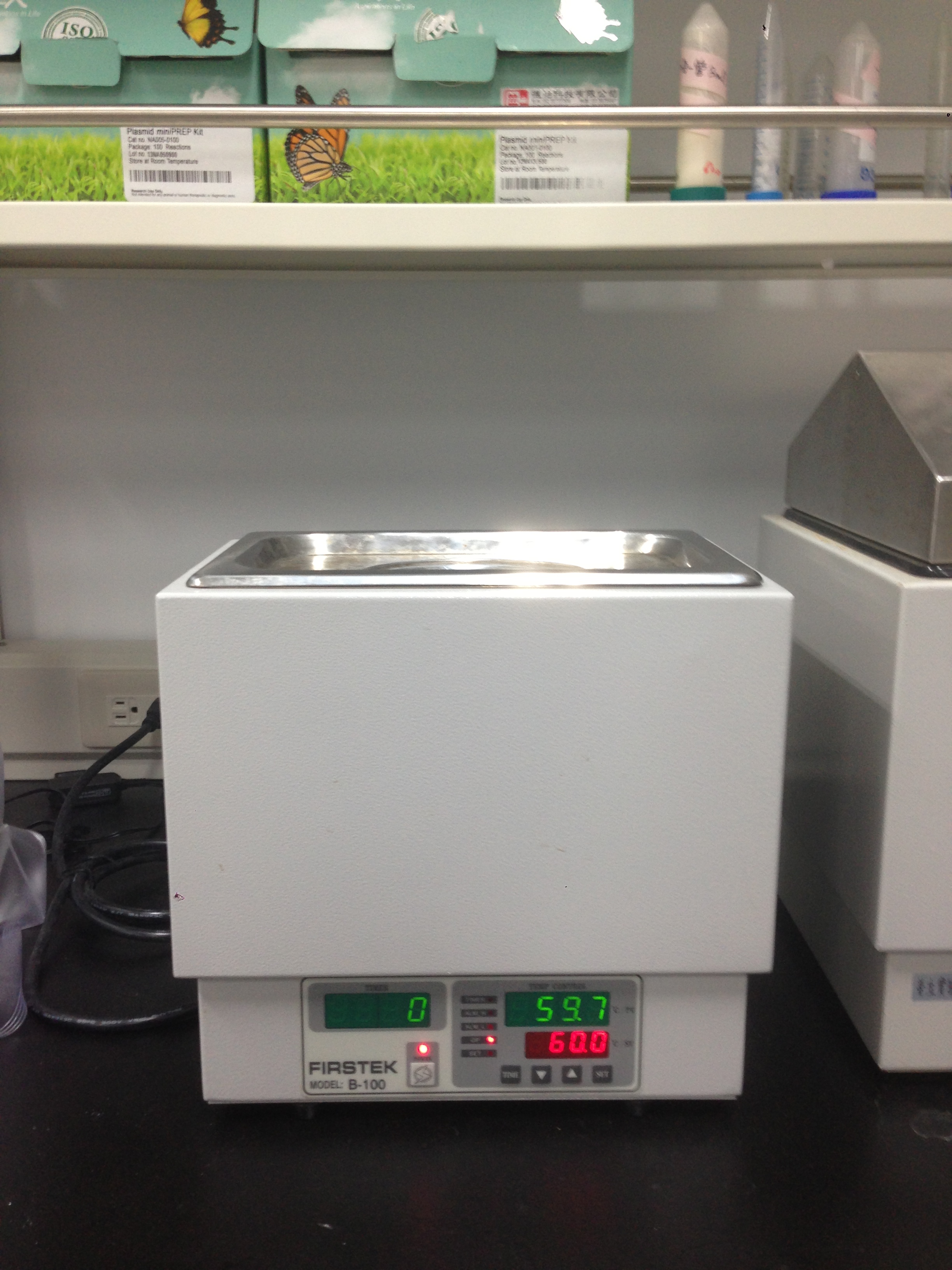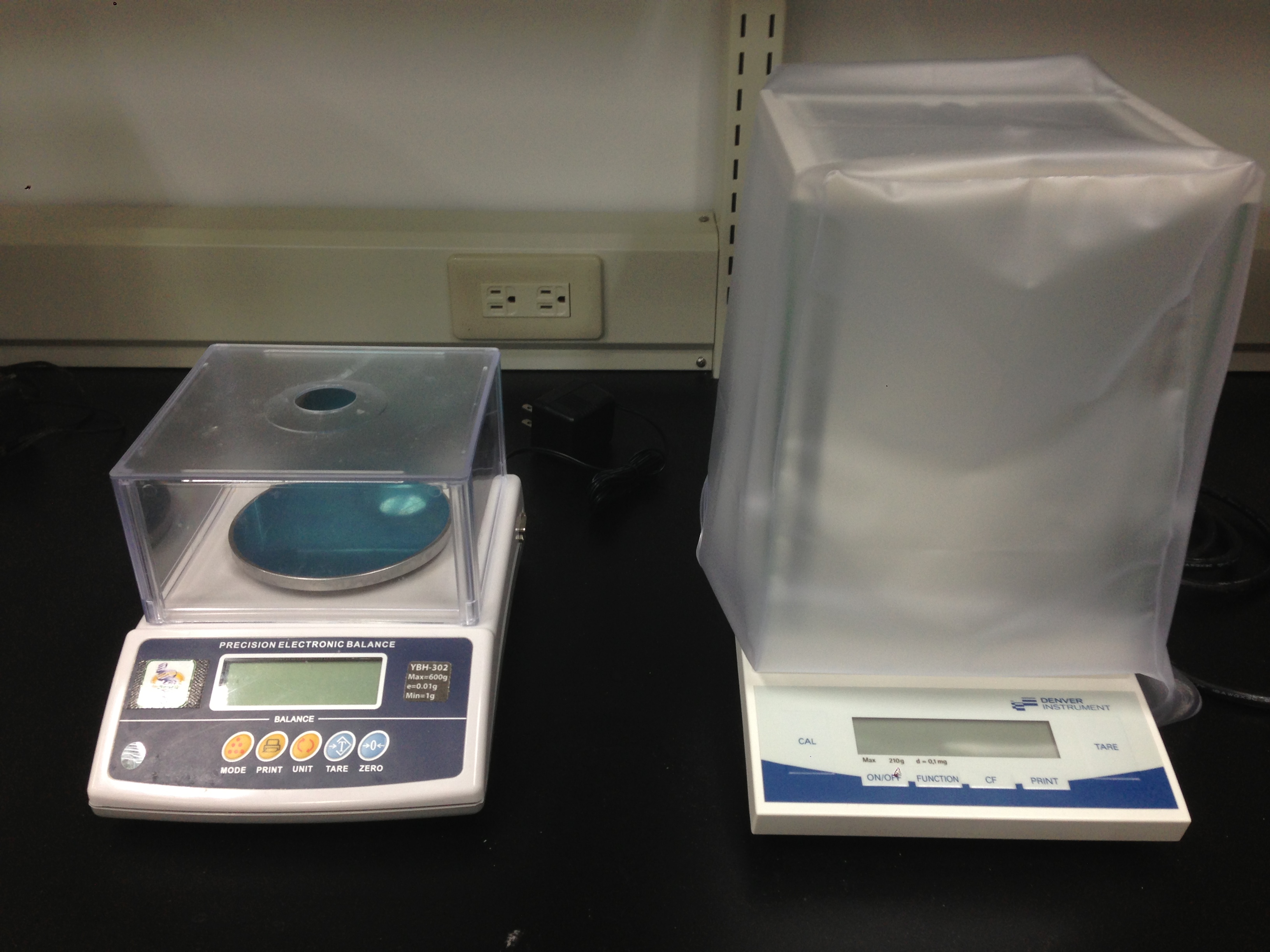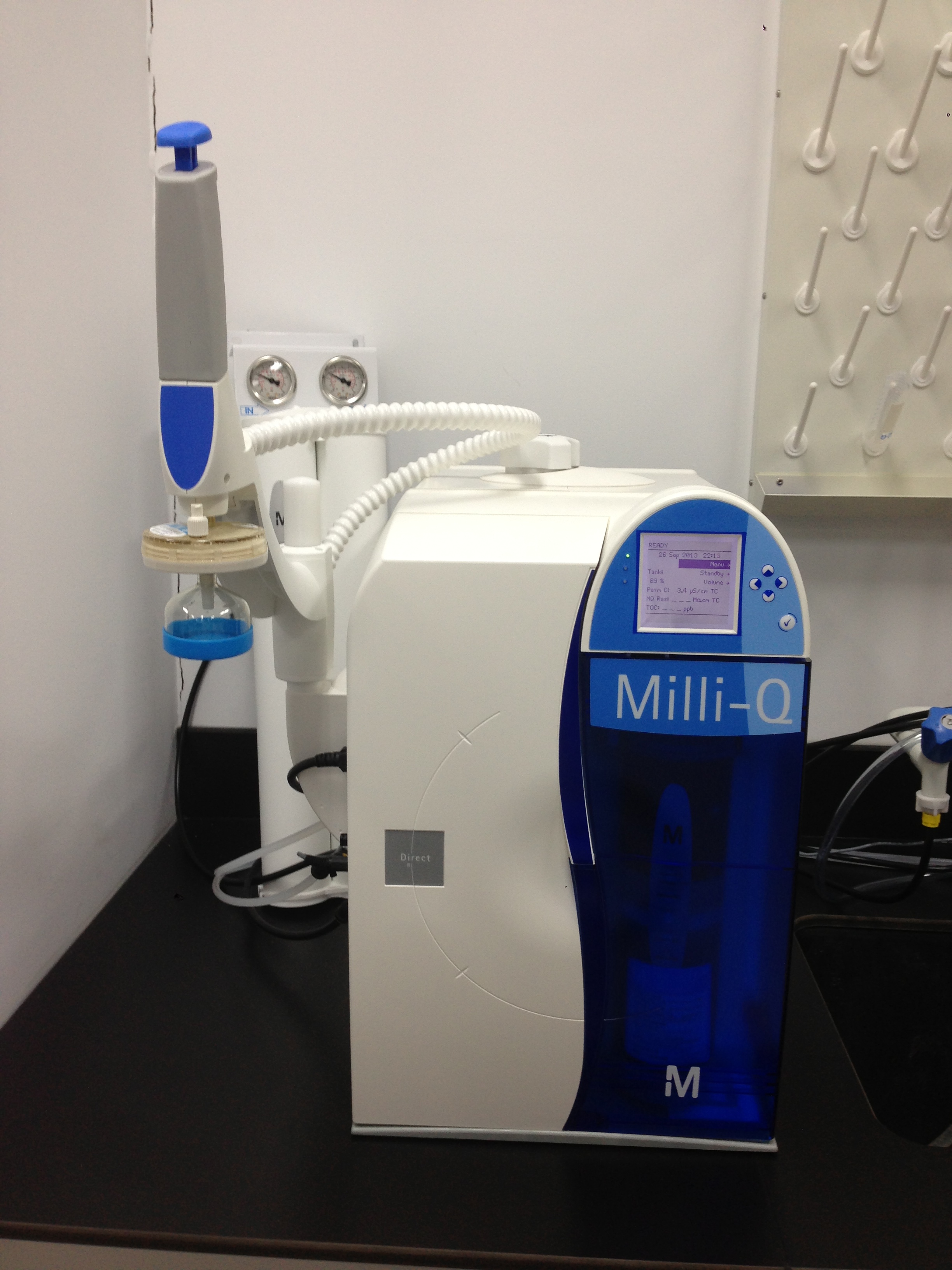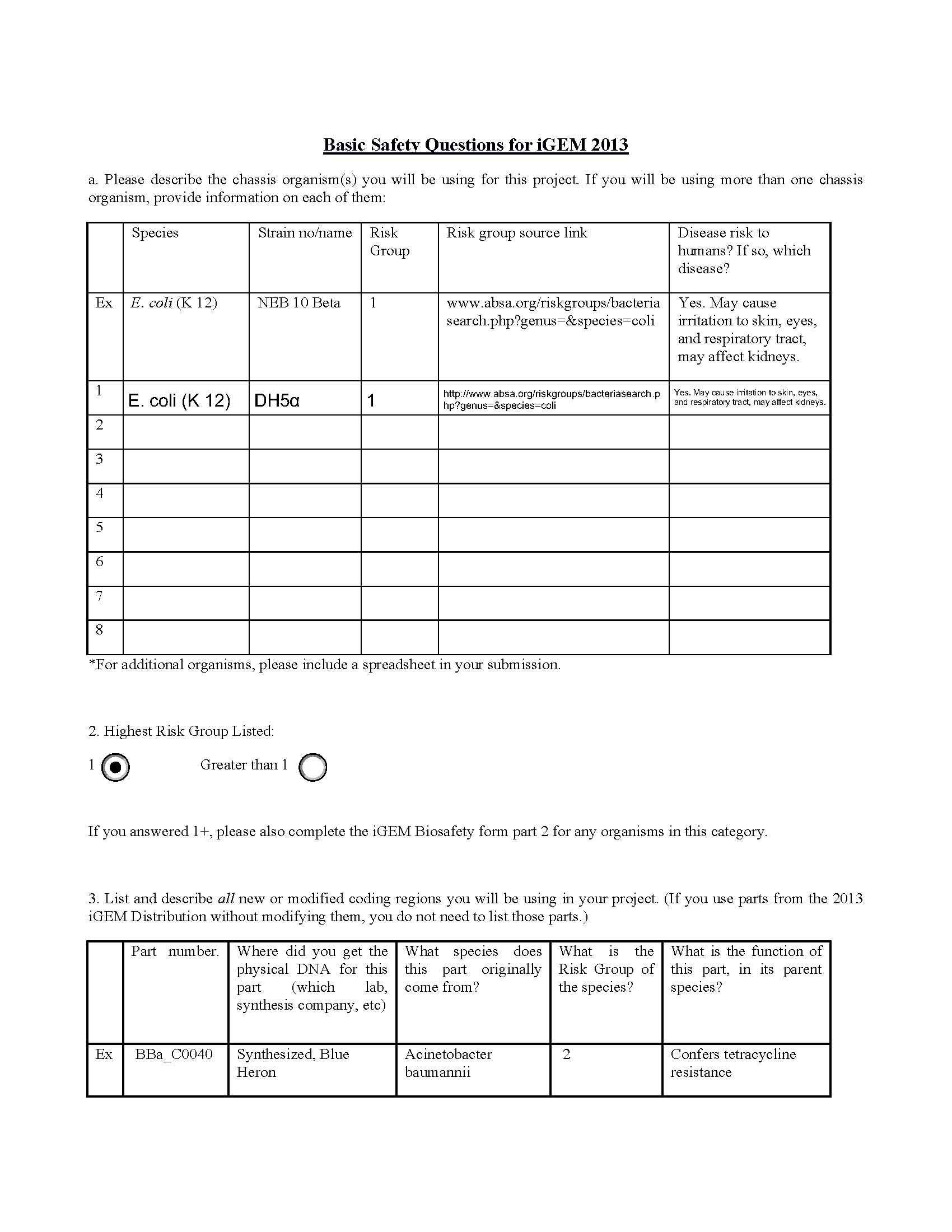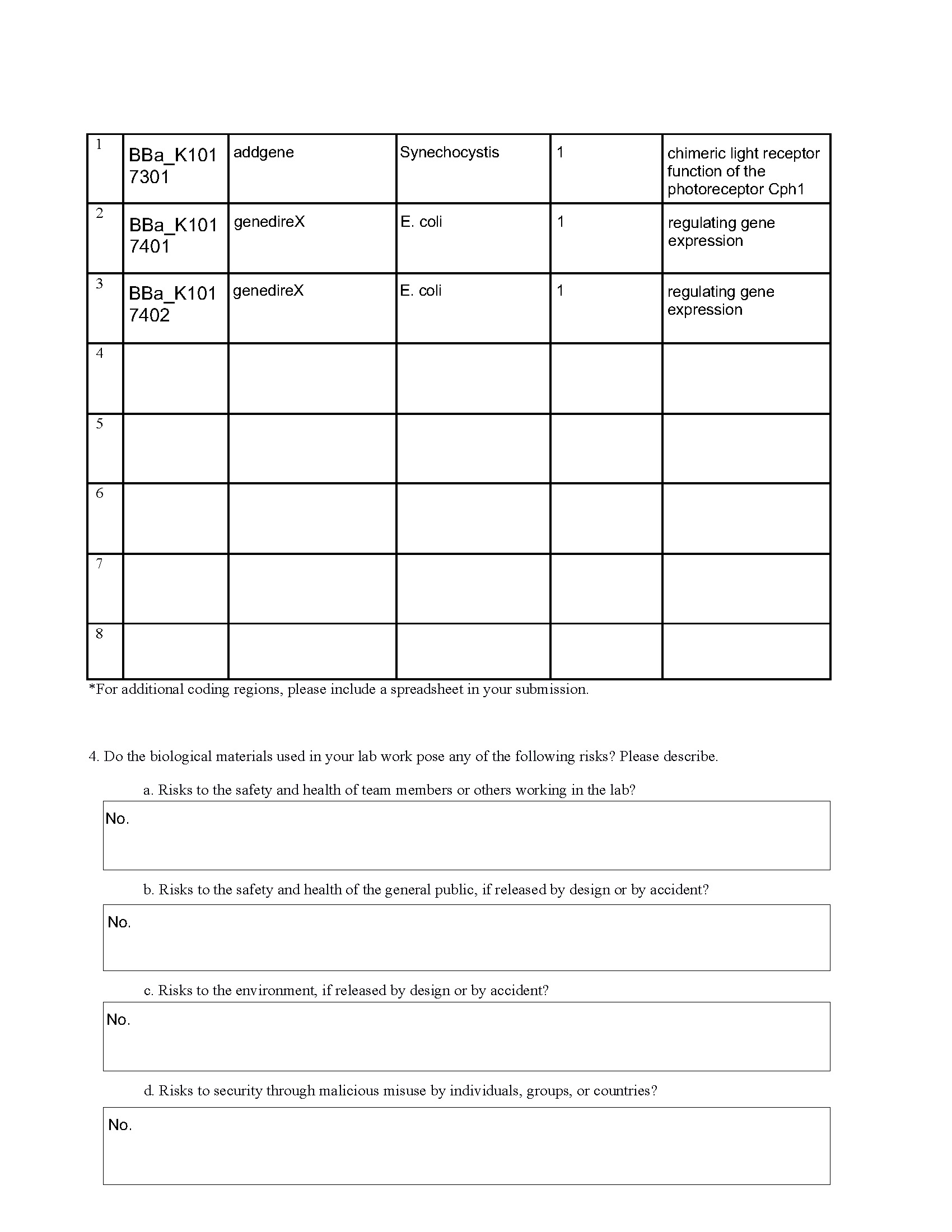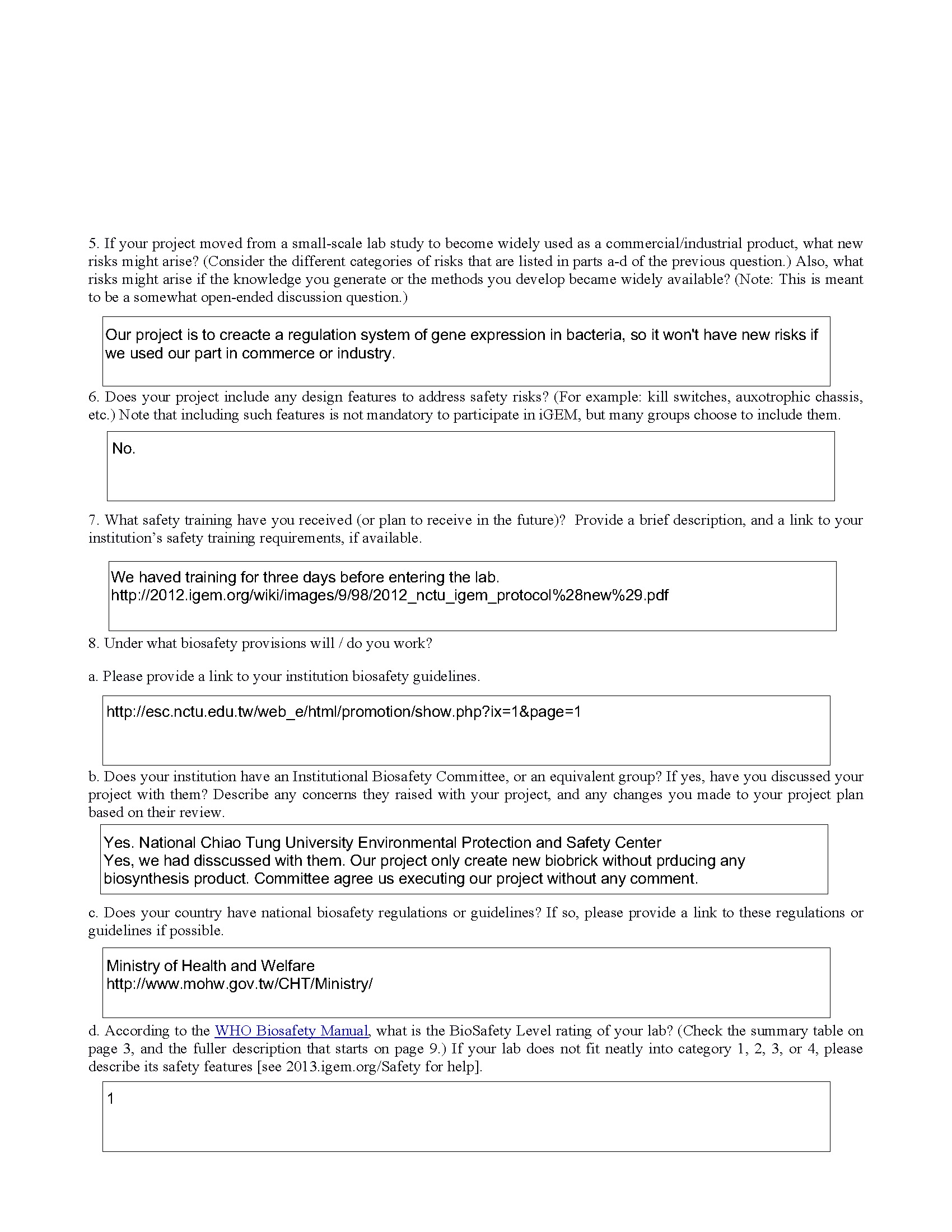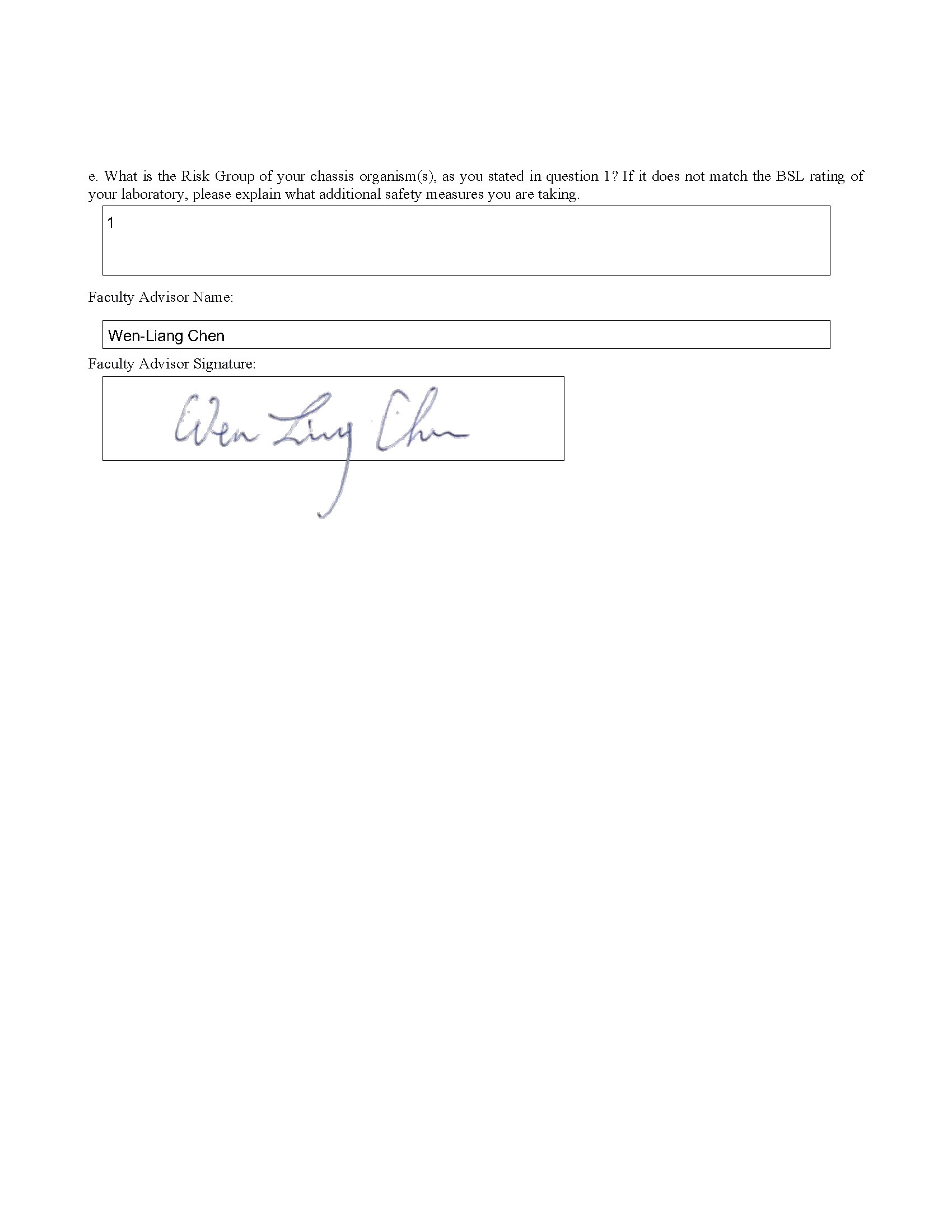Team:NCTU Formosa/safety
From 2013.igem.org
Mike821005 (Talk | contribs) (→Instrument in Our Lab) |
Mike821005 (Talk | contribs) (→Instrument in Our Lab) |
||
| Line 57: | Line 57: | ||
===Instrument in Our Lab=== | ===Instrument in Our Lab=== | ||
====Incubator==== | ====Incubator==== | ||
| + | [[File:NCTU FORMOSA WIKI SAFETY incubator.JPG|300px]] | ||
====Autoclave==== | ====Autoclave==== | ||
| + | [[File:2013igem_NCTU_FORMOSA_WIKI_SAFETY_IMG_1848.JPG|300px]] | ||
====Benchtop 2UV Transilluminator ==== | ====Benchtop 2UV Transilluminator ==== | ||
| + | [[File:NCTU FORMOSA WIKI SAFETY gel film.JPG|300px]] | ||
| + | |||
====Cenifuge==== | ====Cenifuge==== | ||
| + | [[File:NCTU FORMOSA WIKI SAFETY centifuge.JPG|300px]] | ||
| + | |||
====Thermal cycler==== | ====Thermal cycler==== | ||
| + | [[File:NCTU FORMOSA WIKI SAFETY PCRmachine.JPG|300px]] | ||
| + | |||
====Thermostatic water bath==== | ====Thermostatic water bath==== | ||
| + | [[File:NCTU FORMOSA WIKI SAFETY waterbath.JPG|300px]] | ||
| + | |||
====Balance==== | ====Balance==== | ||
| + | [[File:NCTU FORMOSA WIKI SAFETY balence.JPG|300px]] | ||
| + | |||
| + | ====Water purify system==== | ||
| + | [[File:NCTU FORMOSA WIKI SAFETY DDWmachine.JPG|300px]] | ||
===2013 Safety Form === | ===2013 Safety Form === | ||
Revision as of 13:42, 25 September 2013
Inside a newly built, well-equipped laboratory, we conducted our experiment. Besides safety equipment, each member is well informed of the safety rules and emergency handling.
Contents |
SAFETY OF OUR PROJECT
Our project is to create a regulation system of gene expression in bacteria, only create new biobrick without producing any biosynthesis product. So it won't have new risks if we used our part in commerce or industry. We had discussed with National Chiao Tung University Environmental Protection and Safety Center.The committee agree us executing our project without any comment.
ORGANISMS WE USED
| Species | Strain Number | Risk group | Disease risk to human |
|---|---|---|---|
| E.coli | DH5α | 1 | May cause irritation to skin, eyes, and respiratory tract, may affect kidneys. |
NEW OR MODIFIED CODING REGION WE USED
| Part number | Where to get this part | Originally come from | Risk group | Function |
|---|---|---|---|---|
| [http://parts.igem.org/wiki/index.php?title=Part:BBa_K1017301 BBa_K1017301] | addgene | Synechocystis | 1 | chimeric light receptor function of the photoreceptor Cph1 |
| [http://parts.igem.org/wiki/index.php?title=Part:BBa_K1017401 BBa_K1017401] | genedireX | E. coli | 1 | regulating gene expression |
| [http://parts.igem.org/wiki/index.php?title=Part:BBa_K1017402 BBa_K1017402] | genedireX | E. coli | 1 | regulating gene expression |
SAFETY PROCEDURE IN OUR LABORATORY
This year, we use E.coli DH5α, a bacteria that classified under Risk Group 1, as our classis. It's a non-hazardous and non-infective bacteria that generally used in labs and biological experiments. The safety problem of products in the project is also concerned. In our design, E.coli is engineered to produce various fluorescence proteins and some plant hormones, which are harmless to human and environment. Even so, we follow the standard safety procedure to guarantee a safe experiment environment without dangers. To sum up, we have confidence that our project will not raise any biosafety issue.
Researcher's Safety
In order to protect our researchers from infecting engineered organisms and contaminating the samples, we strictly require all the researchers to follow the rules:
- Every participant have read Safety Guidelines for Biosafety Level 1 to Level 3 Laboratory , announced by National Chiao Tung University - Environmental Protection and Safety Center.
- Researchers are fully trained before doing experiments individually. Teaching assistants will guide and supervise the experiments at the first few times.
- Researchers doing experiment must wear on lab coat and gloves.
- No experiments is allowed to be done outside the biosafety cabinet, in order to minimize the possibility of releasing Genetically Modified Organisms (GMOs) .
- Before and after conducting experiments, 70% alcohol is applied to sterilize hands, equiptments, platform, or anything direct contact E.coli.
- Well designed hazard dealing protocol is applied in all labs in NCTU
Pubilc Safety
To ensure that the engineered organisms will not leak out and contaminate the environment, all stocks, wastes and cultures which contacted these bacteria should be sterilized, packaged and executed base on standard decontamination procedures. We also set up a strict door access system, preventing miscellaneous people acquiring E.coli. In fact, E.coli we used in lab is less competitive to wild type, because of the lost of the ability to form biofilms and to thrive in the intestine. As to our product, fluorescent proteins and plant hormones lose their function after autoclaving in high temperature and pressure. So, our project does not raise public safety issues according to above reasons.
Institutional Biosafety Committee
In our university, National Chiao Tung University (NCTU), Environmental Protection and Safety Center (ESC), is strictly responsible for the safety of all labs in the school. What we did in our project follows the rules they announced, and they manage all instruments and chemicals, especially for dangerous and toxic ones. The ESC is supervising our project and our advisors who are in charge of laboratory safety come regularly and check if the rules are fully followed. We started the project only if we got ECS’s permission. In fact, they support our project and think it will not raise any safety issues in terms of researcher, public, and even environment. [http://esc.nctu.edu.tw/web_e/index.php National Chiao Tung University - Environmental Protection and Safety Center (NCTU ESC)]
Instrument in Our Lab
Incubator
Autoclave
Benchtop 2UV Transilluminator
Cenifuge
Thermal cycler
Thermostatic water bath
Balance
Water purify system
2013 Safety Form
 "
"
